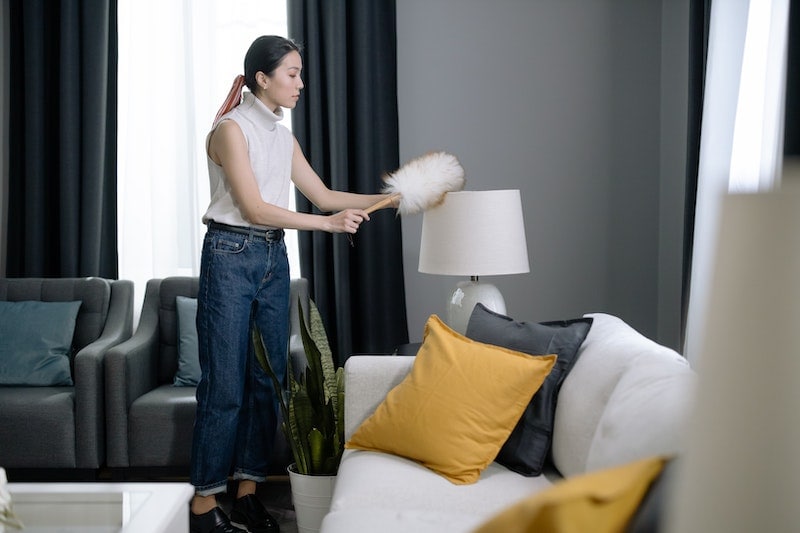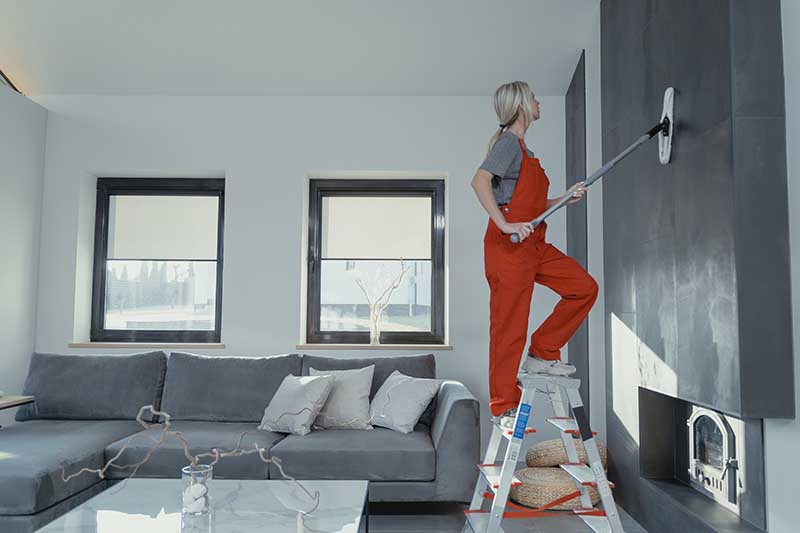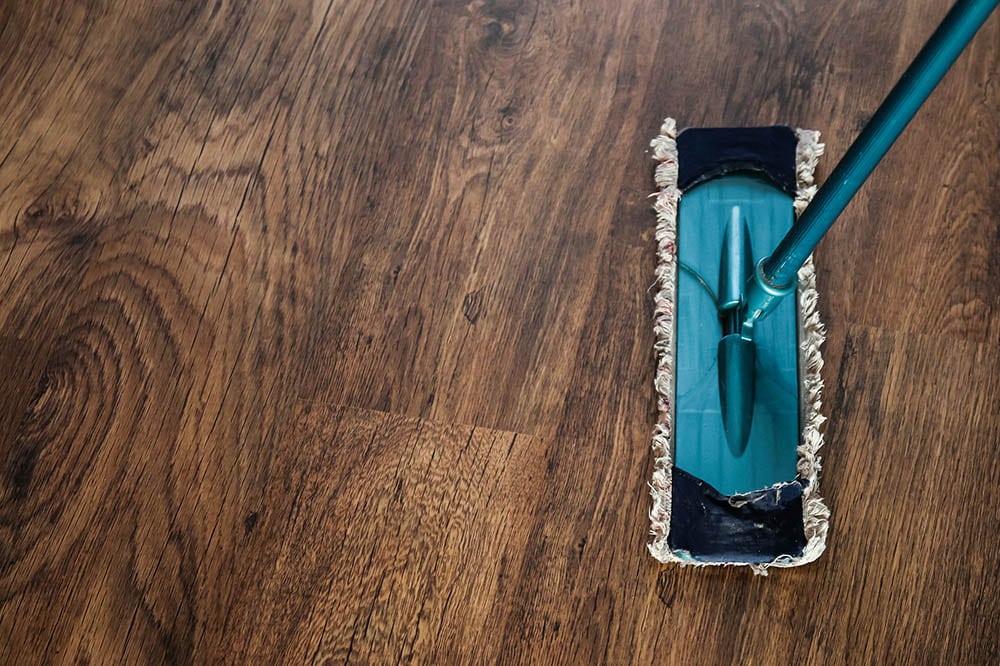How Often Should You Dust Your House? Facts & FAQs
-
Pete Ortiz
- Last updated:

Cleaning can be a pain, but if you let grime and dust accumulate, a few minutes of cleaning could easily turn into a 12-hour affair. Also, dust consists of harmful aerosols that can be harmful to your health and that of your family. This is perhaps why Americans spend 6 hours on average per week doing household chores.
Each household may have its own set of dusting standards, but you should dust your house at least once per month, especially in the easy-to-access areas of your home, like floors and countertops. Hard-to-reach areas like ceilings should be dusted at least once every three months.
In this article, we will discuss how often one should dust their house and highlight some tips to make dusting more efficient and less of a chore. Read on to learn more!
Frequency of Dusting a Home

Cleaning and dusting your home may seem like a daunting endeavor, but it must be done. Failure to regularly dust your house will make it look dirtier, even after finishing with other chores. Below is a simple schedule you can follow for the frequency of dusting different areas of the house.
Dust Daily or Once a Week: Regularly Used Areas
There are certain household items that we use daily such as coffee or dining tables, chairs, lamps, sofas, desks, and side tables. These items may have daily applications, but dust doesn’t settle on all their surfaces. Either way, it’s good to wipe them at least once a week or every day to remove dust and other forms of dirt, such as food particles and cup rings. A damp cloth should be able to get rid of dust from their surface.
Dust Twice a Month: Areas With Less Foot Traffic
You can dust the areas that don’t experience heavy foot traffic at least twice a month. These include guestrooms, bedrooms, hallways, and other places in the house that are rarely used. The other areas that require dusting twice every month include ceiling fans, blinds, TVs, shelving baseboards, and wall decors.
Dust Three Times a Year: Hard-to-Reach Areas
This is the recommended dusting schedule for hard-to-reach and rarely-used areas that do not require regular cleaning. This is where pests and insects like rats and spiders tend to hide in a home. They include high windows, attics, inside light fixtures, plants, crown molding, and on top of high cupboards. Most people focus on these areas during spring cleaning, which is done just before the holiday season or at the end of summer.
Factors That Determine How Often You Should Dust Your Home
As with most house chores, the frequency of dusting will depend on several factors. This is why dusting schedules differ from one homestead to the next. Once you understand what makes your home different, you can then formulate a dusting schedule that suits your preferences and home needs.

- Type of Home. People who live in an apartment don’t have to dust their house as often as people who live in large houses. Smaller houses have fewer surfaces for the dust to accumulate. Also, chances are higher that if you live in a large house, you will not be using all the rooms as you would in a flat.
- Number of Occupants in Your Household. More people translate to more dust particles in your home because one of the main components of dust is dead skin cells. So, it stands to reason that a home with a family of five will have more dust particles than a house with a single occupant.
- Presence of Pets. If you have a furry friend at home, you will have more dust particles present in your home. Pet dander produces dust that accumulates on the furniture, carpets, and rugs. So, you will have to clean your house more often, ideally once every week. However, you can reduce dust from pet fur by grooming your pets.
- Your Occupation. If you have embraced the gig economy and spend more time working from home than in the office, you will need to dust your house more often. Moreover, if you spend the day at work in a dusty environment, you are likely to drag the dust particles back to your home, no matter how hard you try to clean up after work. A good example of people working in dusty environments is plumbers and builders. In such a situation, the house should be dusted more frequently.
- Individual Preferences. Some people do not mind clutter and dust in their homes, while others cannot stand an untidy room. If you are relaxed about dust in your home, you don’t have to dust as often. But if you are a “neat freak” who likes a spotless house, you can dust your premises as often as possible.
- The Season. In seasons like winter, one may barely notice dust in the house because it tends to be dark. Most people notice dust and dirt in their homes during spring when the light peeks behind the clouds. This is perhaps why spring cleaning became a thing. So, you can adjust your dusting schedule, so it flows with the season.
- Type of Furniture. Dust tends to accumulate in some types of furniture more than in others. For instance, bookshelves tend to accumulate more dust particles than other pieces of furniture. Therefore, you will need to clean them as often. But as a rule, the more furniture surfaces available for the dust to settle, the more dusting you must do. Ideally, clean all furniture surfaces at least twice a month.
- Climate. Dry areas tend to accumulate more dust particles than areas in humid climates. So, if your area has low humidity, you need to dust your home more often.
- Susceptibility to Allergies. Dust is the number one source of allergies for most people. If anyone in your home suffers from allergies, you should clean your house more frequently to help reduce their symptoms.
How to Properly Dust Your House

Plan Your Dusting Schedule
Before you begin dusting your house, it is recommended that you have a clear and concise plan on how to go about it. You need to create a list of all the tools you need for the job. When your tools are ready, decide where to start, the procedure to follow, and where to finish dusting. It is best to perform one chore across the board to limit the time spent going back to the rooms for additional cleaning.
Begin with hard-to-reach areas, like walls, ceilings, and ceiling fans, and then come down to appliances and surfaces. You can finally finish up with the floors of your home. Planning will make dusting easier and will also ensure you do not miss any spots.
Open Windows While Dusting
Before dusting your house, ensure the windows remain open throughout the process. As you continuously shake things off, dust particles might settle back on your clothes, fabrics, and linens, which makes the process counterproductive. By opening the windows, the dust will be blown outside instead of returning to the floors and furniture surfaces. Furthermore, cracking open windows will significantly improve the air quality in your home unless you live in a dusty environment.
Blow Dust in the Right Direction
Dust particles tend to move from the top of the house to the bottom. Therefore, experts recommend that you dust your house in the higher parts of the room, like ceiling fan blades, chandeliers, and bulbs. Work your way down to the shelves and countertops and finish dusting the floors. If you dust starting with the bottom, the dust will return to the areas that you have already dealt with, which means you must keep repeating the process.

Use the Right Tools
A damp piece of soft microfiber cloth is the best tool for getting rid of dust particles in your house, except for the floors. Dry clothes can do the work but will shake the dust particles loose and settle on neighboring surfaces. A damp one will clamp most of the particles and will not lose them until you wash the cloth in water.
A spray bottle filled with warm water and detergent should help further clean the surfaces, fan blades, countertops, and appliances. A soft microfiber cloth is better than a rough cloth for dusting because it doesn’t leave scratches on the surfaces of your appliances and countertops.
Vacuum the Floors
The best way to get rid of dust particles from floor surfaces is to use a duster before vacuuming. Make sure the vacuum cleaner you use comes with HEPA filters because the filters can easily pick up pet fur and tiny dust particles from the floor. They are also equipped with carbon filters with antimicrobial properties that help kill disease-causing pathogens and bacteria.
You can vacuum different types of flooring, including vinyl and tile, among others except for hardwood floors. Hardwood floors should only be dusted with vacuum cleaners equipped with double filter cloths. Normal vacuum cleaners will damage the finishing on hardwood floors.
Clean Your Equipment Regularly
Ensure that you regularly clean your microfiber cloth in warm water every time you dust your house. You should also empty the vacuum cleaner’s waste container and clean the filters after dusting.
Conclusion
Dirty surfaces and appliances in a home can be an eye-sore. They not only create an unsightly image, but when dirt accumulates on moist surfaces like kitchen sinks and window sills, they can promote mold growth. This can have adverse health effects on you and your loved ones.
Not only that, but dirt particles can also settle on your appliance and damage them, thus incurring a lot of unnecessary expenses in maintenance and repair costs. Therefore, it is best to dust your house as regularly as possible to avoid such issues.
Experts recommend that you dust your house once every week for household items used every day. For rarely used rooms, dust at least twice a month. Hard-to-reach areas like ceilings and attic require cleaning once every year, preferably in spring. Just make sure you use high-quality tools which you clean after use, make a cleaning plan, and open the windows while dusting to keep your house a dust-free zone.
Featured Image Credit: cottonbro studio, Pexels
Contents


